Affiliate links on Android Authority may earn us a commission. Learn more.

Garmin vívofit 4 review: two steps forward, one step back
Published onFebruary 2, 2018
Garmin vívofit 4
What we like
What we don't like
Our scores
Garmin vívofit 4
There are plenty of cheap fitness trackers on the market, but often the lower price tag means getting fewer features. That’s still the case with Garmin’s new vívofit 4, but this device aims to bridge the gap between lower end wearables and the other $100-plus devices out there.
The vívofit 3 was one of our favorite fitness trackers in 2017. Is the vívofit 4 a worthy successor? Let’s find out.
I've been using the Garmin vívofit 4 as my main fitness tracker for roughly two weeks. The Google Pixel 2 XL has been my smartphone companion of choice for the duration of this review.
Design
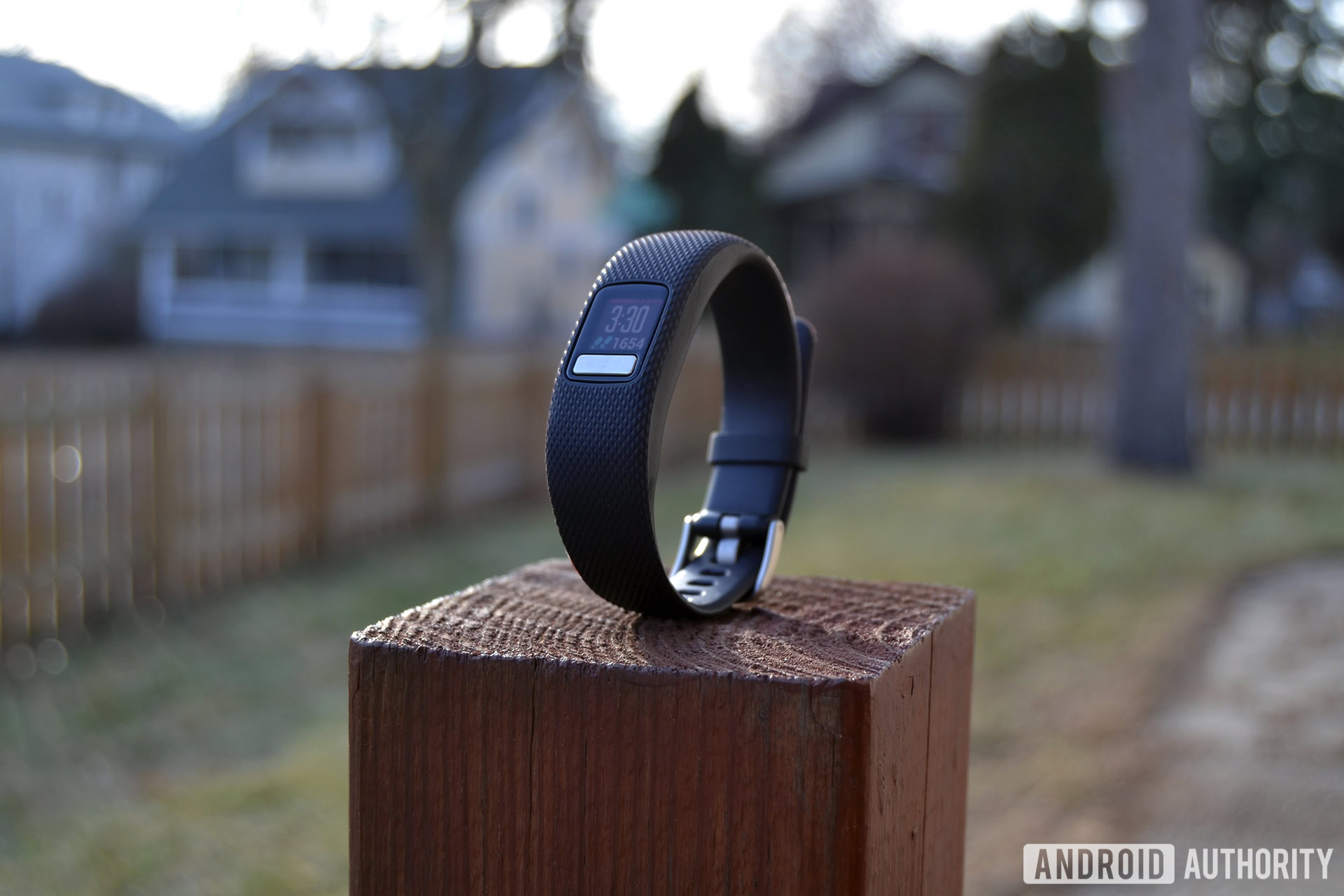
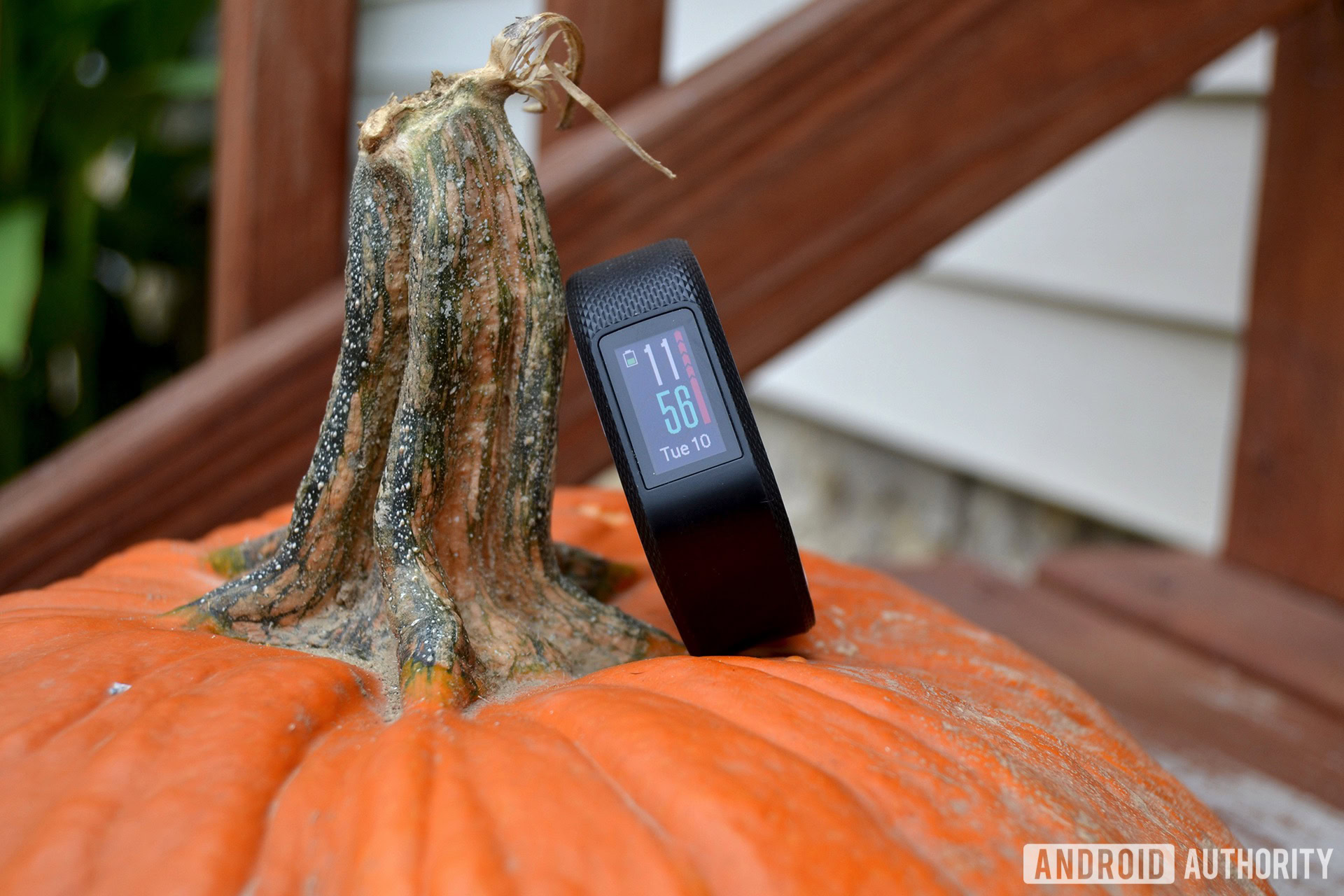
Garmin has done a pretty good job at making the vívofit 4 look like the company’s pricier fitness trackers, like the vívosmart 3 or vívosport. The vívofit 4 is slim, measuring just 11 mm thick and 23 mm wide — slightly wider than its predecessor. It’s light, too, at just 25 grams. I often went through the day without realizing it’s still on my wrist, which is important for a fitness tracker.
One of the big differences in design between the vívofit 3 and 4 is the bump up to a larger, color screen. The vívofit 4 has a slightly larger 11 x 11 mm display (the 3’s was 10 x 10 mm). The vívofit 4’s screen has a backlight too, which can be turned on by pressing and holding the physical button for about a second.
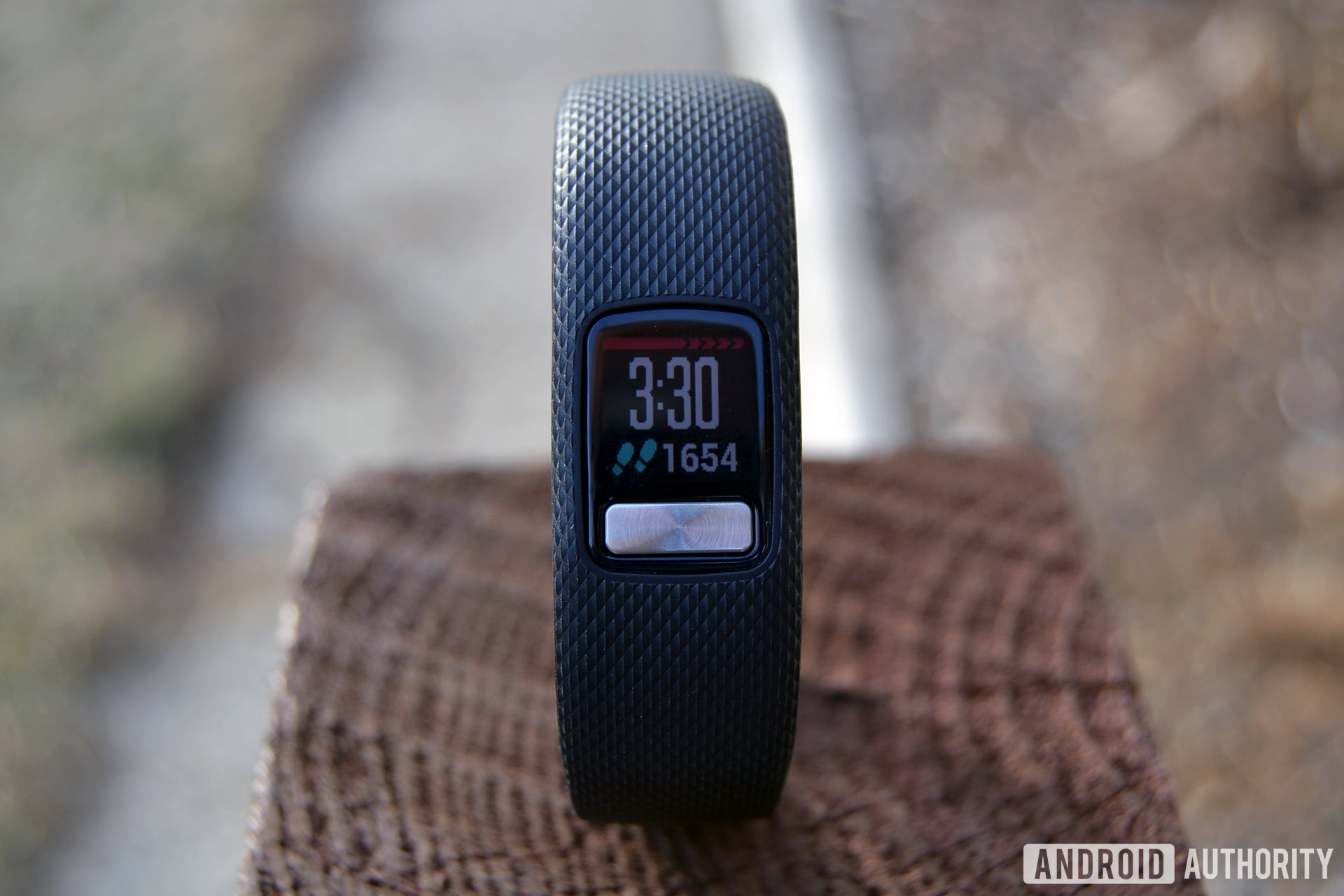
The display is easy to read outdoors, though it can be difficult to read in average-low light when you’re inside if the backlight isn’t turned on. It feels a little odd the backlight doesn’t turn on when you click the button, but that’s probably to keep that battery going for a full year.
The included strap is comfortable enough to keep on your wrist all day, though it feels more plasticky than the vívosport’s strap. It also comes with a standard watch-style clasp this time — likely a welcome change for those upgrading from any other vívofit model.
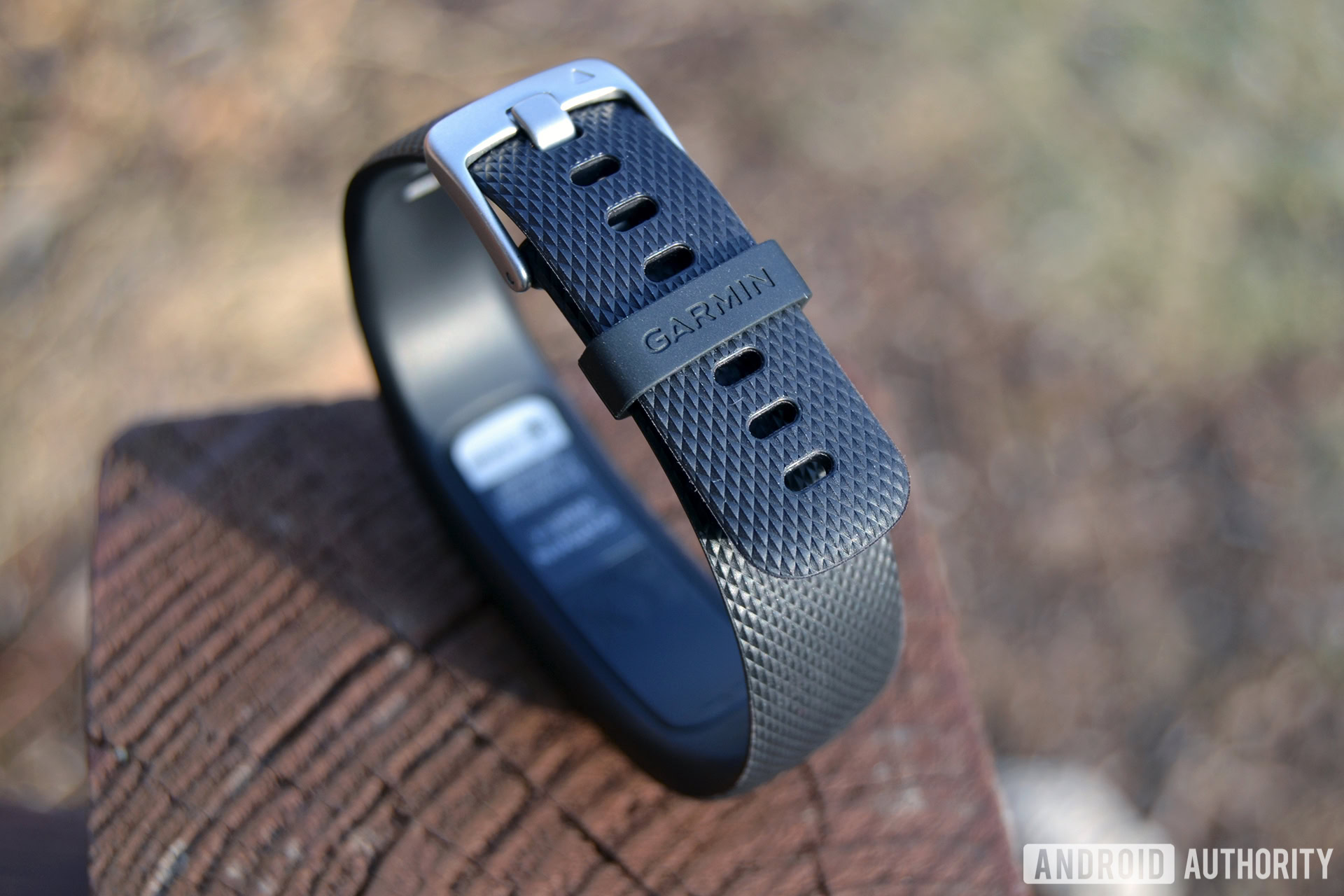
You can buy the vívofit 4 in three different color options — black, white, or black/lime green speckle. All three of those bands can be purchased separately for $19.99 a piece, or you can spring for the two pack of merlot and navy speckle bands for $29.99.
Features and performance
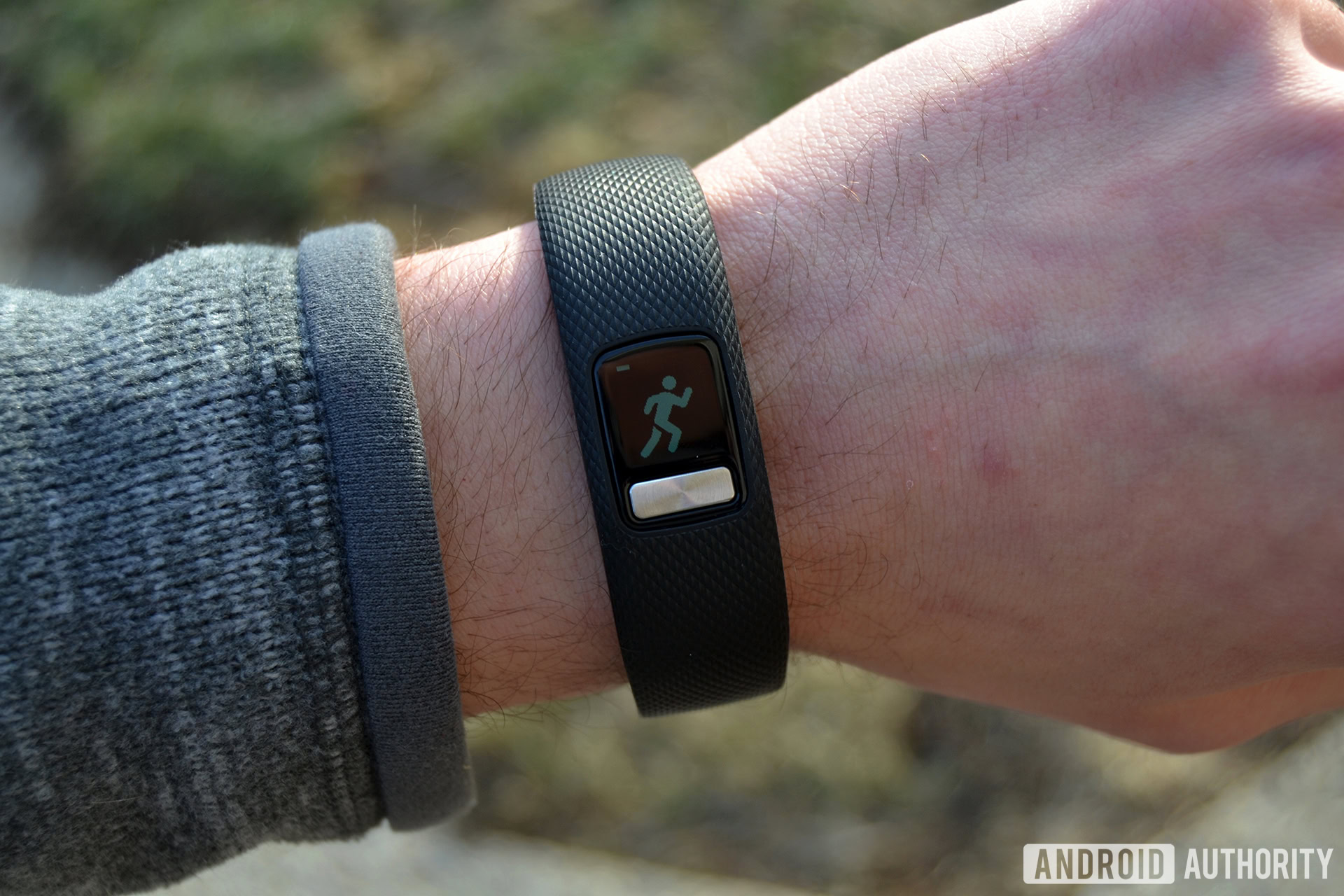
The vívofit 4 costs $80 — $60 less than the vívosmart 3 and $120 less than the vívosport. The lack of a GPS and a heart rate monitor means it isn’t for everyone, but it’s definitely an attractive device for those who just need the basics.
It’ll track your steps taken, calories burned, sleep, and distance traveled, though the lack of a GPS means you won’t get hyper-accurate distance data.
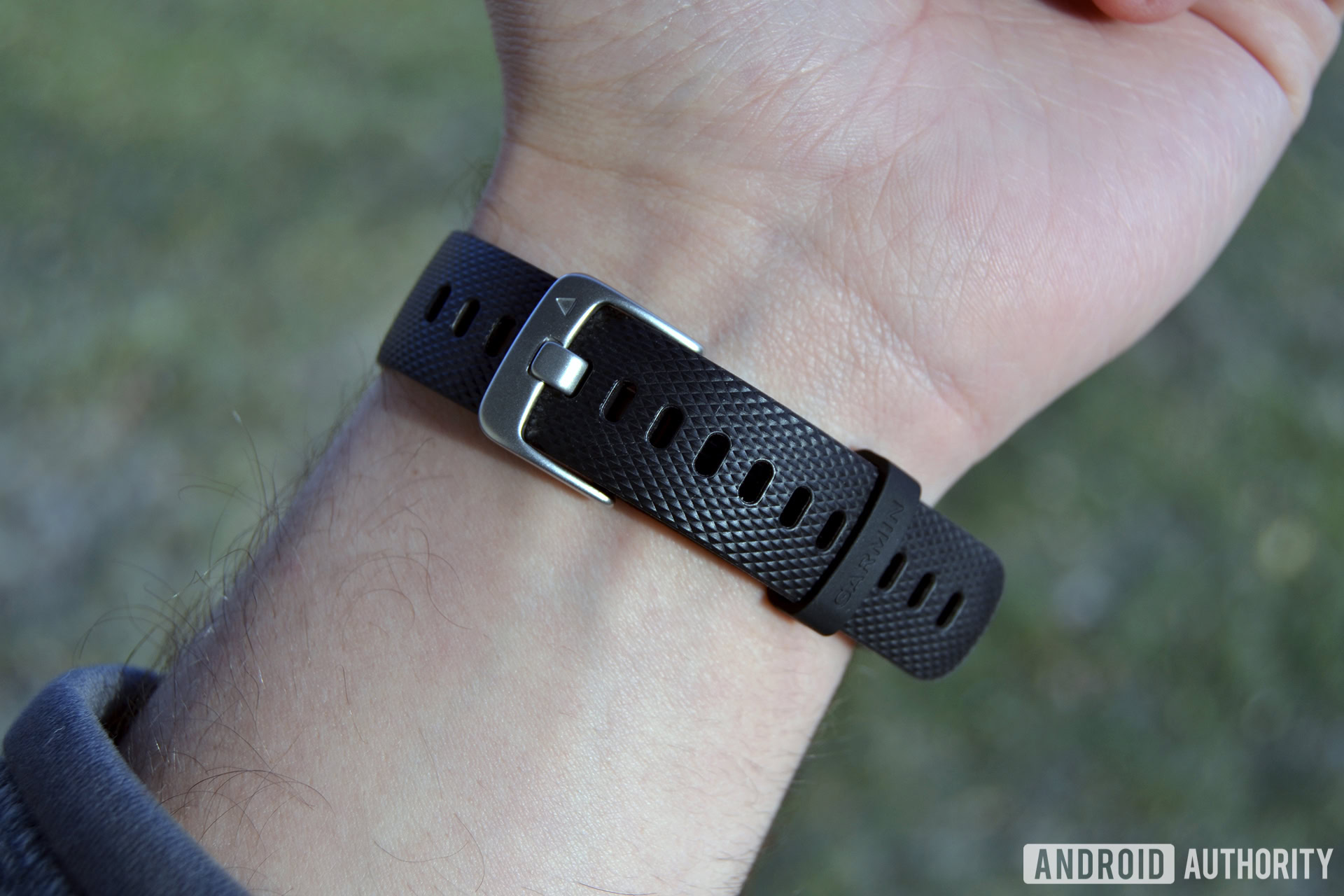
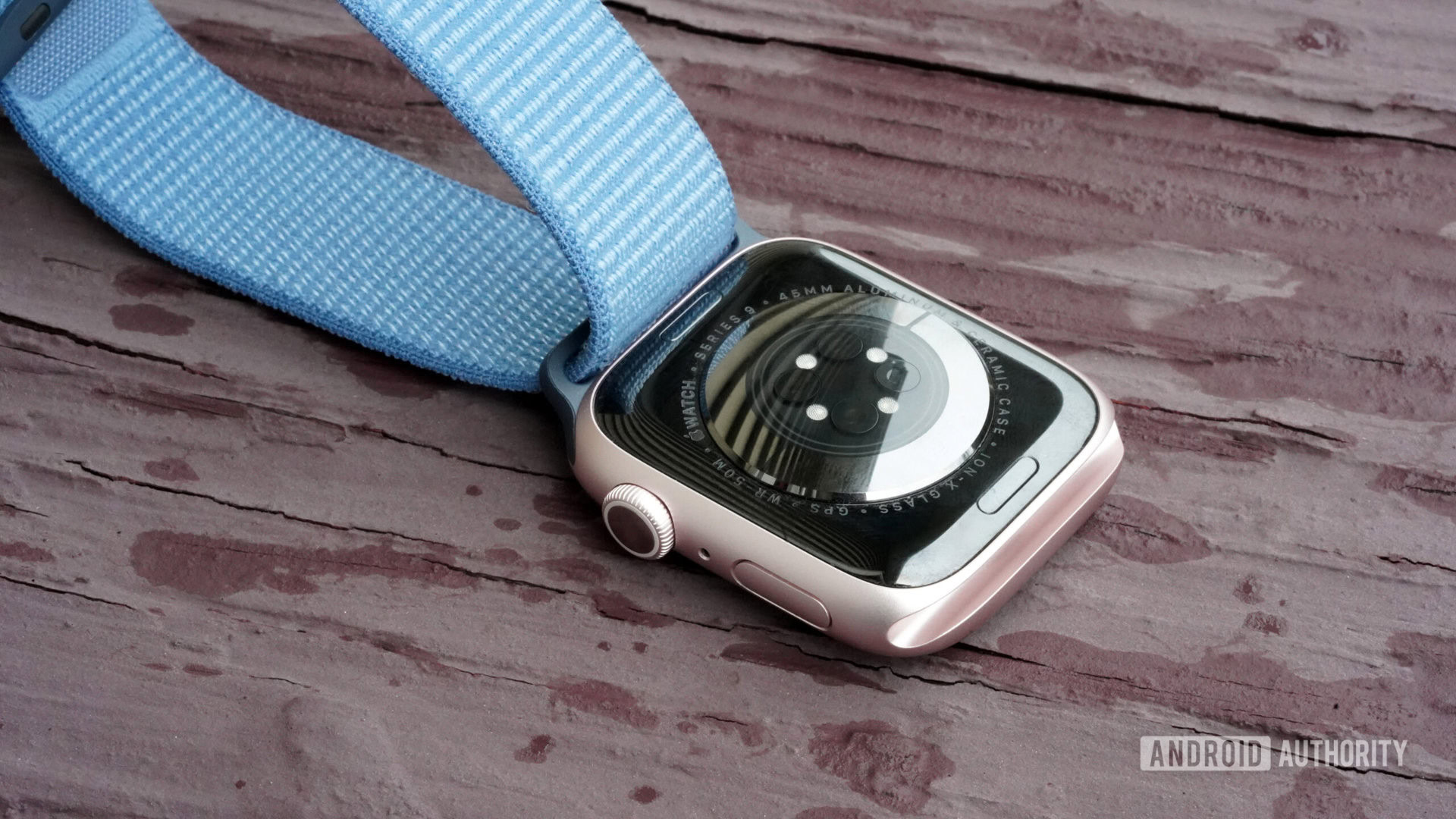
Normally lacking a heart rate sensor would be okay. Previous vívofit models allowed you to connect to an external heart rate sensor thanks to ANT+ connectivity. For some reason Garmin didn’t find it necessary to include ANT+ support with the vívofit 4, which is quite frankly a shame. Heart rate sensor connectivity made the vívofit line stand out from other similarly priced trackers, and now it’s gone. This alone makes it difficult to recommend over the competition.
The removal of ANT+ connectivity is a shame.
Garmin says moving to a color display and including more features built into the software made the company concerned about the amount of code space available to support ANT+ connectivity. A Garmin representative told Android Authority it could be added back “in the future.” We sure hope this feature returns with the vívofit 5.
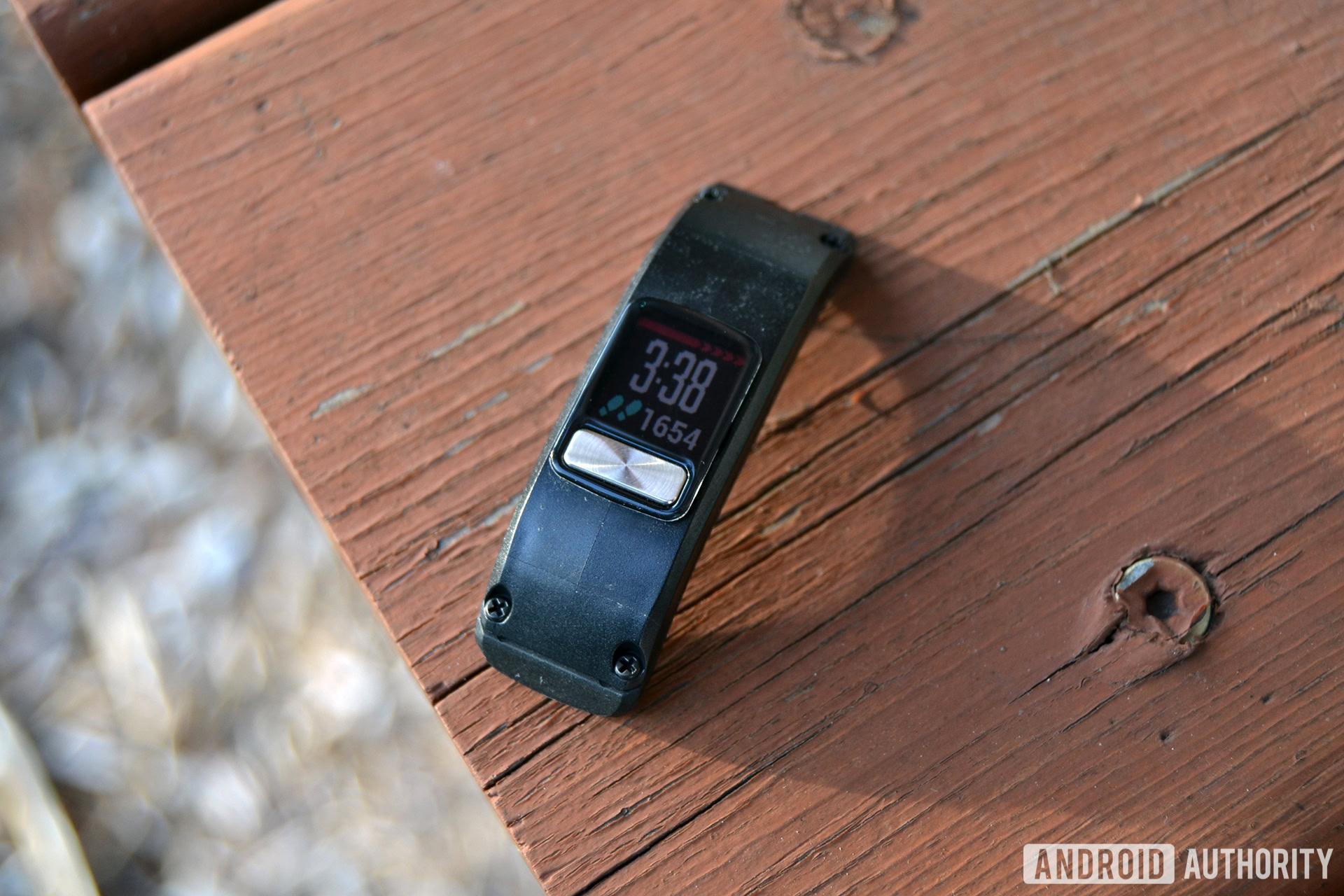
The vívofit 4 supports Garmin’s wonderful automatic activity recognition feature, Move IQ. That means you won’t need to manually start an activity before your workout. It auto-detects activities like walking, running, biking, using an elliptical, and swimming, though it won’t track your swims — you’ll need to spring for a more expensive device if you want lap/speed data.
The vívofit 4 comes with a 5 ATM water resistance rating, which means you can take it in the pool or shower.
Even though it has a rating of 5 ATM, the vívofit 4 won't track your swims — you'll need to spring for a more expensive device if you want lap/speed data.
If you’re just interested in the vívofit 4 as a pedometer, you’ll be happy to hear that it’s great a tracking steps. After we received our second review unit, the vívofit 4 was able to keep up with the vívosport and Fitbit Charge 2 in terms of step count accuracy.
One other useful feature is the move bar. Throughout the day, the vívofit 4’s colored move bar fills up and notifies you when you’re stationary for too long. Walking around for a few minutes will clear the move bar, or you can turn these notifications off if you don’t want to be bugged throughout the day.
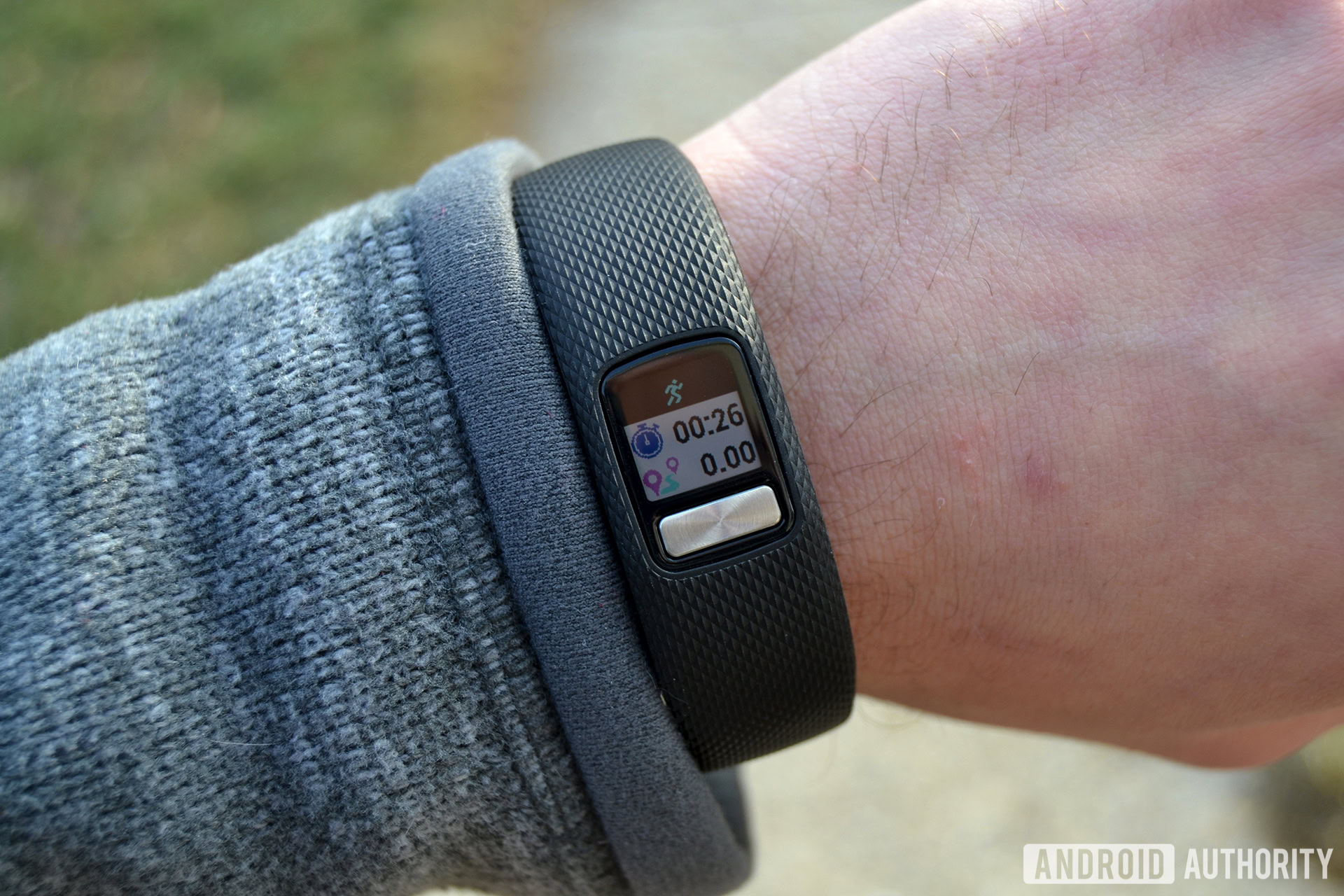
During exercise, the vívofit 4 keeps track of your steps taken, total exercise time, and calories burned. It will also show you distance, pace, and speed information but these metrics are based on accelerometer data, so they’re not going to be as accurate as you might like. Still, the fact that the device attempts to provide these metrics will help give users a general idea on their performance level.
The vívofit 4’s accelerometer was hit and miss throughout our testing period, but it was mostly a miss. It often overshot distance and speed by a lot. I took a three-mile run on the treadmill and kept a steady pace of 7.8 mph. In the screenshots below, you’ll see the vívofit 4 recorded my distance as 2.57 miles, my best pace as 2:30 minute/mile, and my max speed as 23.9 mph!
Sleep tracking ranges from mostly accurate to wildly inaccurate, depending on what you’re doing before you go to bed. There are times when the vívofit 4 recognized I was reading in the living room before bed, and did not record that I was sleeping. Other times I wasn’t so lucky. Watching Netflix before bed resulted in the vívofit 4 entering sleep mode, which means it looked like I slept 12 hours multiple nights in a row. Even worse, during the time that I was watching Netflix, the device recorded that I was in deep sleep mode — not even light sleep.
You can alter mis-recorded sleep and activity data right from the Garmin Connect app, but we wish the device would record the data correctly in the first place.
Garmin Connect records your sleep levels and movement throughout the night, as well as how much of your sleep was deep, light, and if you were awake. The app also offers weekly sleep trend graphs, though they’re not displayed in a very helpful fashion. We much prefer the line graphs Fitbit’s app offers.
Luckily you can alter mis-recorded sleep and activity data right from the Garmin Connect app, though we wish the device would record the data correctly in the first place.
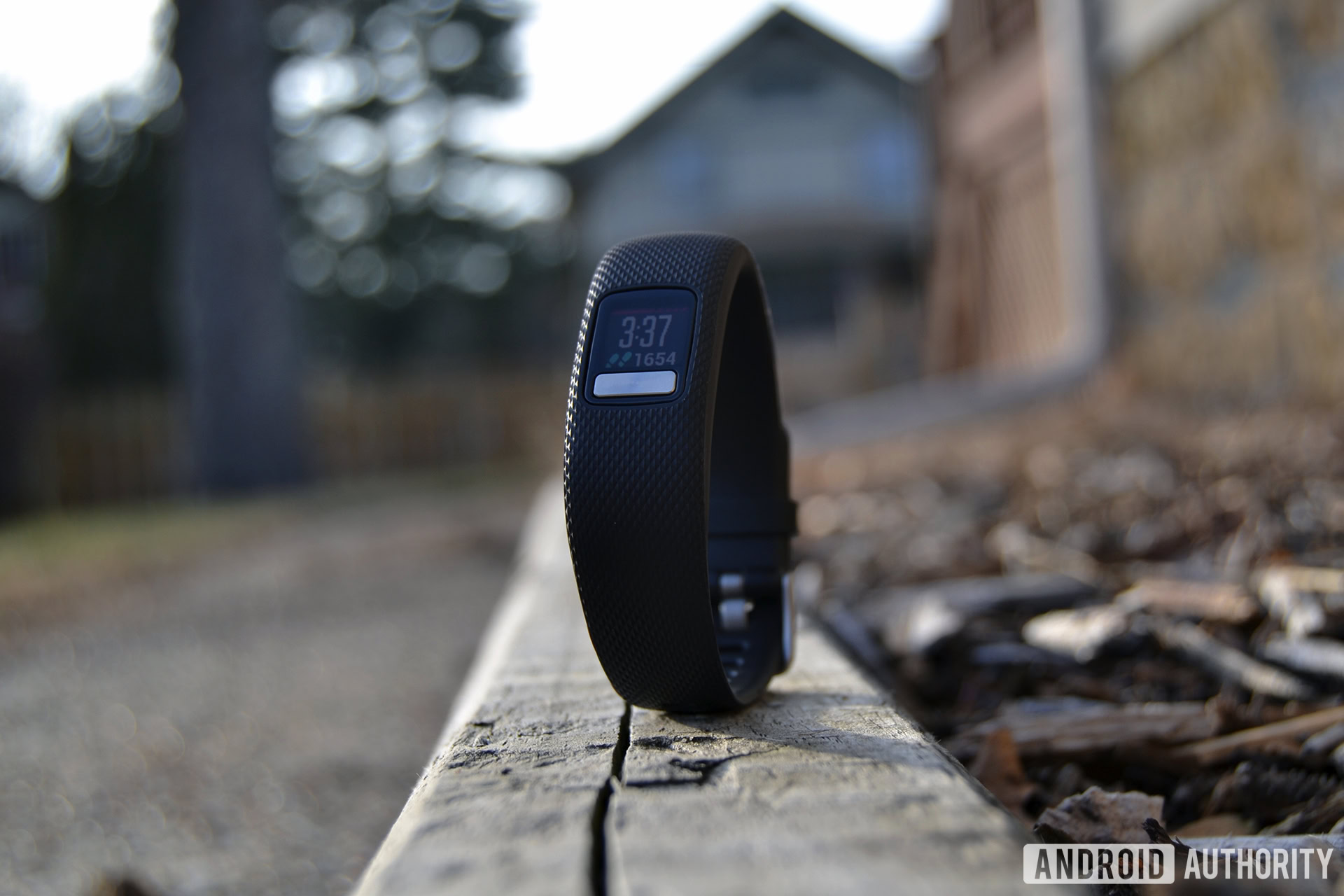
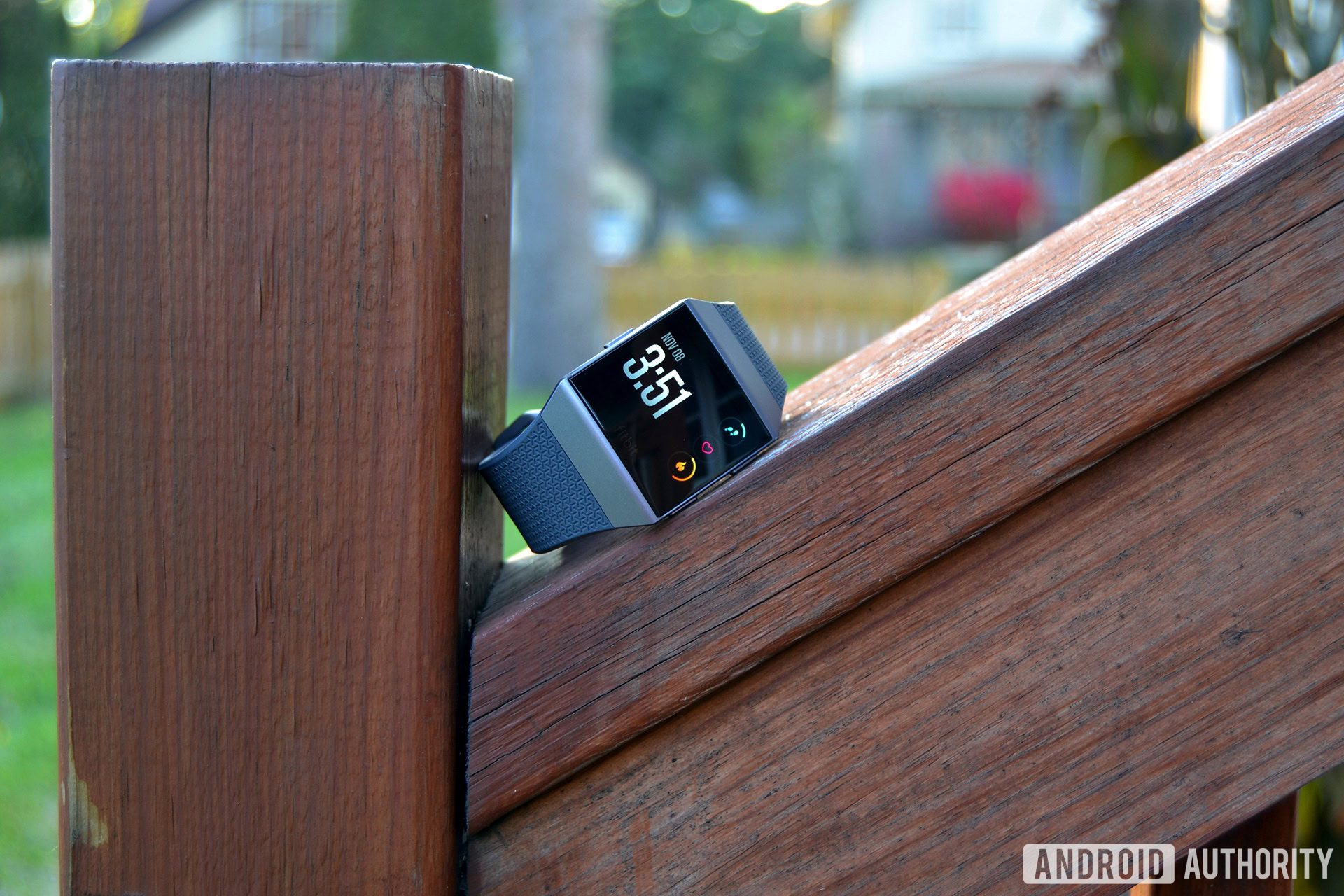
Despite having a screen (albeit a small one), the device has very few smart features. You can set alarms, but there’s still no way for the vívofit 4 to send you smartphone notifications. It’s not like we want to read full emails on that tiny screen, but at least some vibration alerts would be nice. It’d be extremely useful for the device to vibrate and show an email icon when a new email is received or display a phone icon when someone’s calling your phone. It’s a missed opportunity for a device with a display to not offer any type of smart notification, especially when most other wearables on the market offer these features.
It's a missed opportunity for a device with a display to not offer any type of smart notification, especially when most other wearables on the market offer these features.
We understand the argument that smartphone notifications would kill the battery faster, but even if that were the case it’d still last way longer than most other fitness trackers. We’re sure many users would be happier with eight-month battery life and vibration alerts than with no alerts and year-long battery life.
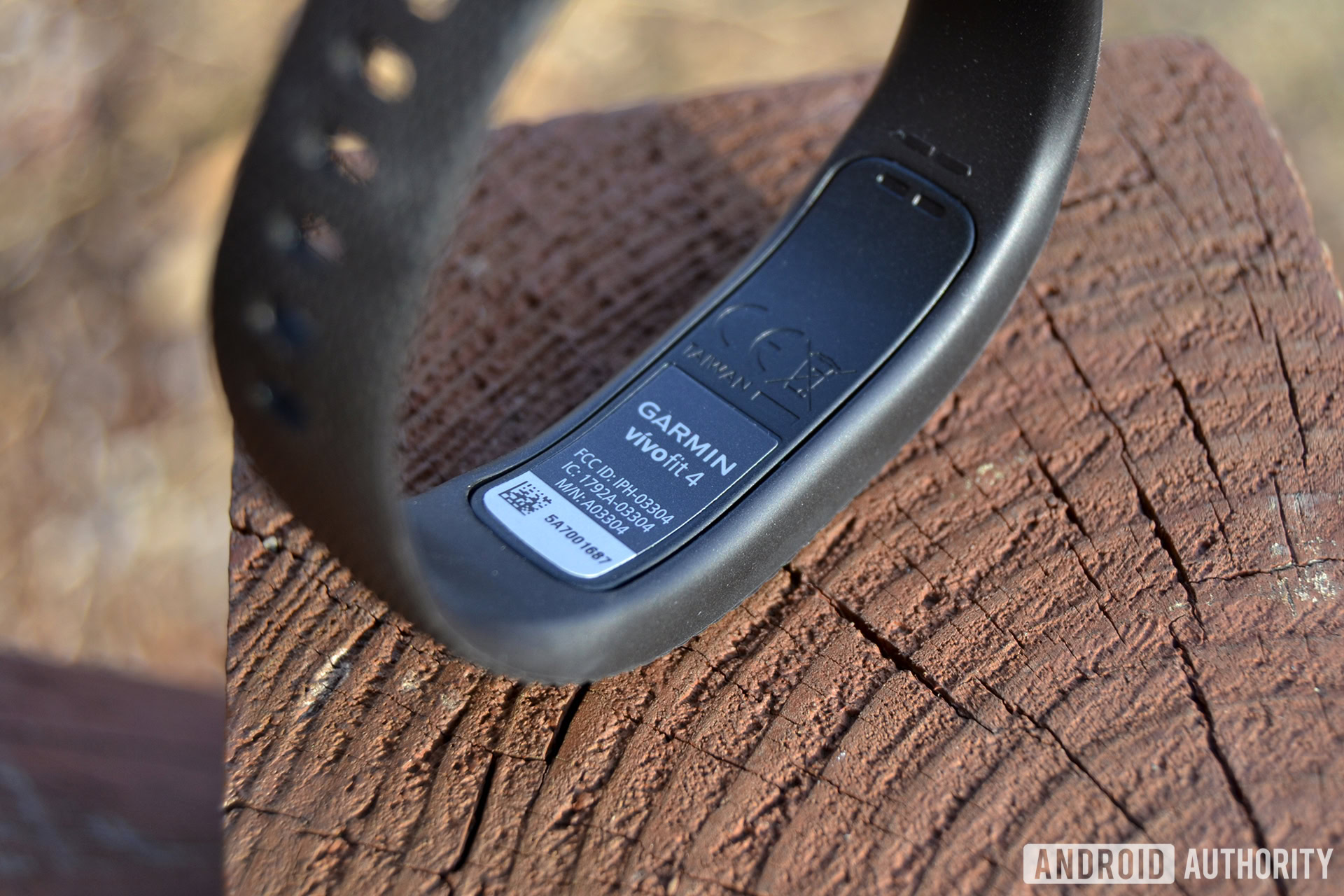
Admittedly “year-long battery life” sounds way sexier than “eight-month battery life,” and Garmin feels that way too. That’s right — the vívofit 4 takes two SR43 coin cell batteries, which Garmin says will power the device for up to a full year. This is hugely beneficial for those who never want to take their fitness tracker off to charge it up. There’s also no proprietary charging cable to worry about losing.
Okay — Garmin included some smart features here. The vívofit 4 has a stopwatch, a countdown timer, a weather widget, and a find my phone feature which will ring your phone if it’s connected with Bluetooth. There are also a handful of different watch faces to choose from, which can be customized with the color of your choosing.
| Garmin vívofit 4 | |
|---|---|
Display | 11 x 11 mm color, transflective eight-color memory-in-pixel (MIP) display 88 x 88 pixels |
Battery | Up to one year 2 x SR43 user-replaceable |
Memory | Four weeks of activity data |
Materials | Silicone or TPU |
Water resistance | 5 ATM |
Connectivity | Bluetooth Smart |
Notifications | Move reminders, alarms |
Compatibility | Android, iOS |
Dimensions and weight | Small/Medium: 19 x 9.4 x 122-188 mm, 25 g Large: 19 x 9.4 x 148-215 mm, 25.5 g |
Colors | Small/Medium: white, black, lime green speckled Large: black Interchangeable bands: speckled merlot, speckled navy pack |
The Garmin app
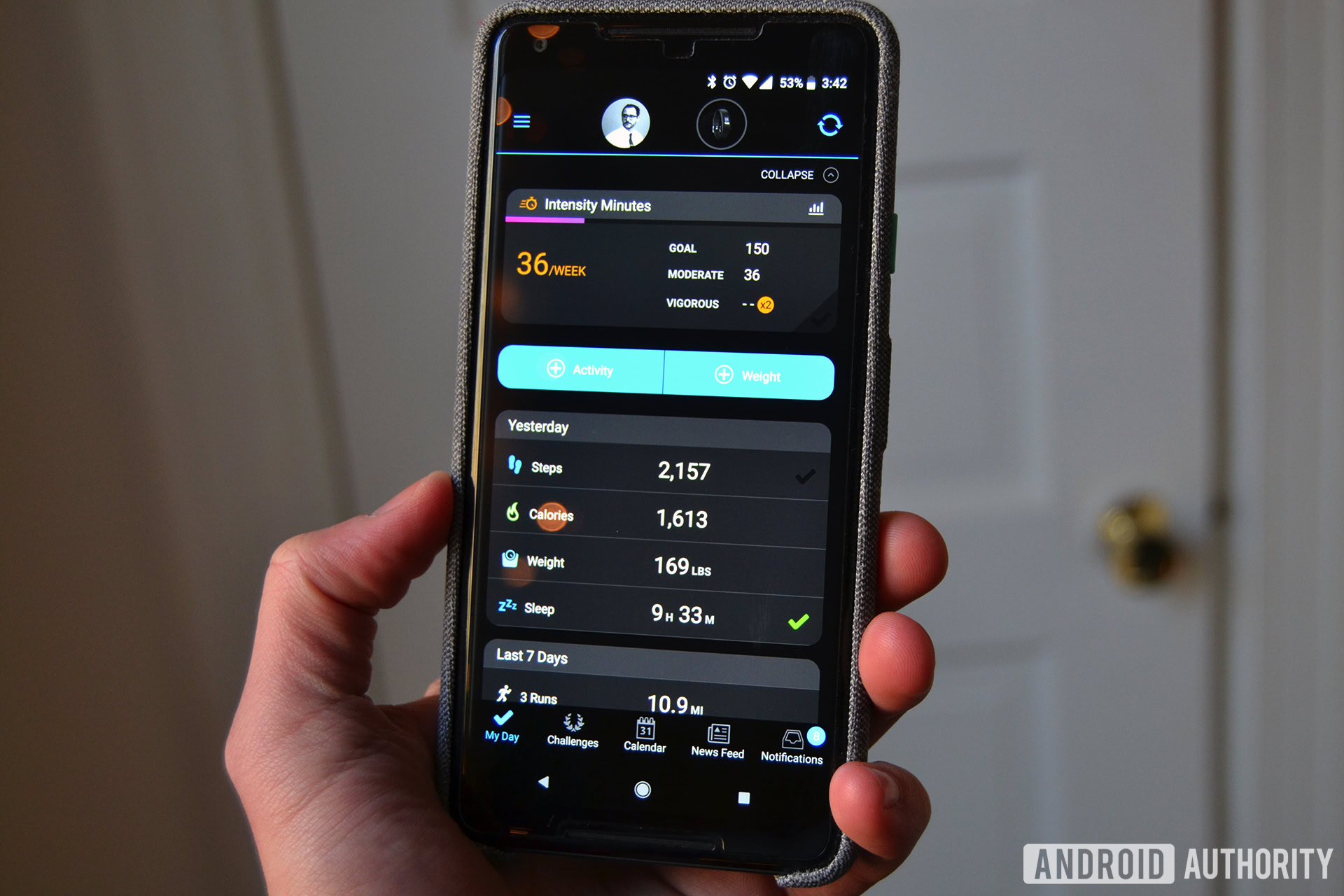
Garmin Connect seems to improve every time we review a new Garmin device. It’s not the most approachable fitness app out there, but it works.
The newest improvement to Connect is the My Day screen, which is where you’ll spend most of your time in the app. This is the main screen, which displays your daily steps, intensity minutes, calories burned, sleep, and even an activity summary from the last seven days. Tapping on any one of these sections will allow you to dive deeper into that activity.
The navigation tab at the bottom of the app hasn’t changed. From there, you can get quick access to the Challenges, Calendar, News Feed, and Notifications sections. Challenges lets you connect with and challenge other Garmin users. The News Feed section shows your recent activities from the previous 30 days.
The Calendar section lets you go back in time and see all the activities recorded for a particular day. This is a novel idea — it can be quite useful — but it’s not implemented as well as it could be. Once you open up the Calendar, all you see are a bunch of differently colored bars on each day of the week. There’s no indication whatsoever about which colored bar correlates to which activity, so unless you memorize what each bar stands for you’re going to play a guessing game every time you look up previous stats. It’s a minor annoyance, and certainly won’t bug everybody.
Garmin, your app is finally good. Now focus on adding more third-party app support.
If you use any other applications like MyFitnessPal, Strava, or Office 365, you can easily sync your activity data from Garmin Connect. Unfortunately those are the only third-party apps that work with Connect, which is still far behind Fitbit’s extensive list.
Gallery
Should you buy it?
The Garmin vívofit 4 is available now on Amazon for $79.99, which is $20 cheaper than the vívofit 3 at launch. That cheaper price tag doesn’t come without consequences, though.
If you use your vívofit 3 with a heart rate monitor, the vívofit 4 should be an obvious pass unless you’re okay with logging HR data in another app. As for the competition, the Fitbit Alta (non HR) offers similar features for a slightly higher price tag, but that also means you’re getting into vívosmart 3 pricing territory. The HUAWEI Band 2 Pro is also a viable option for $10 less, and it comes with built-in GPS and heart rate sensors.
In a lot of ways, the vívofit 4 is a worthy successor to the vívofit 3. It’s more comfortable, with a better strap, a new color display, and plenty of useful extras like a weather widget and stopwatch. The lack of heart rate monitor connectivity is unfortunate. Hopefully it returns with the next model.
The vívofit 4 is an inexpensive fitness tracker that you basically never have to take off, and it keeps track of the basics. We just wish it tracked the basics a little better.
Throughout our two weeks of testing, the vívofit 4 was so close to delivering accurate results but ultimately fell short more often than we’d like. It offers users a more general idea of their performance levels, which is why most people will buy the vívofit 4. It’s an inexpensive fitness tracker that you basically never have to take off, and it keeps track of the basics. We just wish it tracked the basics a little better.